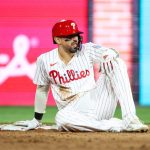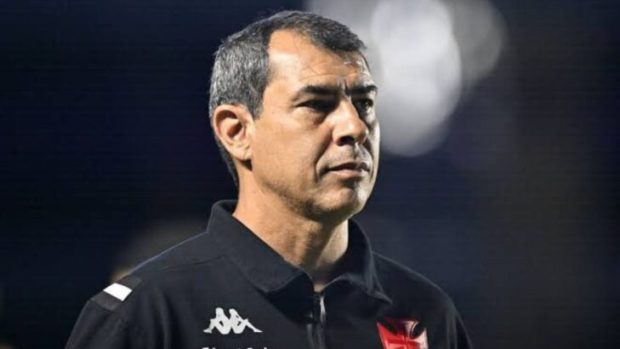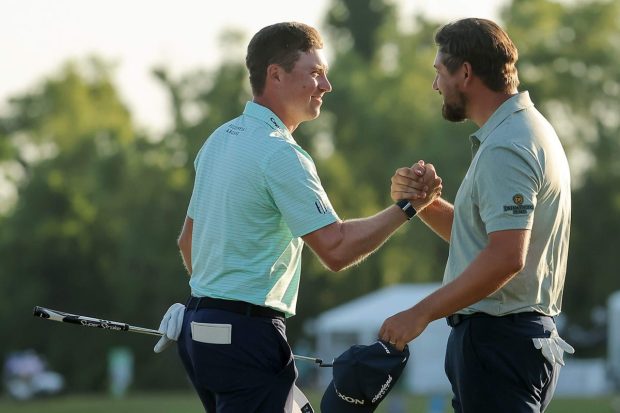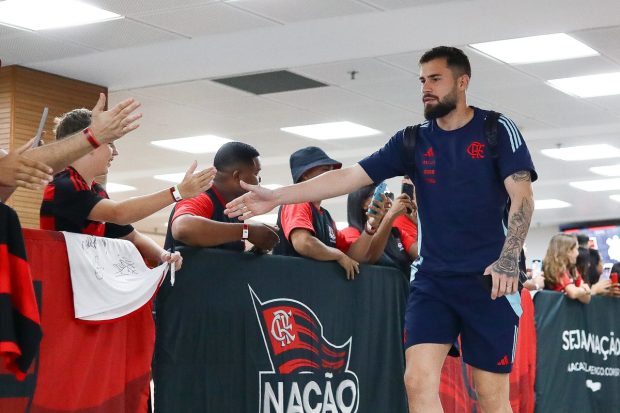
Since the Giants moved to San Francisco, there have been 34 players who have started more than 15 games in April and finished the month with a batting average under .200. Some of them did it more than once. Johnnie LeMaster did it four times, which isn’t a surprise. Jack Clark also did it four times, which is most definitely a surprise.
Advertisement
There have been 44 of these specific season starts in total, which might not seem like a lot for a team that’s been around for 67 years, but consider the qualifier. We’re talking about players who got to start at least half the team’s games, even while they were hitting below the Mendoza line. Not every player gets that sort of buffer. It takes a certain kind of situation.
This comes up now because three of the Giants’ starting nine are currently under the Mendoza line. LaMonte Wade, Jr. is currently having one of the worst Aprils in team history, and the only good news is that there’s an entire week left for him to finish the month strong. Patrick Bailey has provided a couple of big hits, including a two-out RBI single in Monday night’s 5-2 win, but he’s also been struggling mightily. Willy Adames was over .200 for the first time in several weeks after a two-hit game on Sunday, but he went back under against his former team on Monday.
There aren’t any imminent changes to roles coming for the Giants. Bailey and Adames are part of the present, short-term future and long-term future of the team. Wade will face competition at first base and DH from Jerar Encarnación when he’s healthy, and eventually top prospect Bryce Eldridge, who just got off the IL with Double-A Richmond, and possibly Victor Bericoto, who was just promoted to Triple-A Sacramento after obliterating Double-A pitching, but any major change wouldn’t happen for months. The Giants’ plan is to be patient, which might be the only reasonable plan, especially for a team that’s hyper-focused on continuity and finding early success with it.
To help make sense of what an April slump means, here’s a look at the under-.200 Aprils in San Francisco history, sorted into categories that help explain why these players were afforded as many starts as they got.
Advertisement
There was no other plan
|
Player
|
Season
|
April OPS
|
Rest of season OPS
|
|---|---|---|---|
|
Marvin Bernard |
2001 |
.364 |
.863 |
|
Brian Bocock |
2008 |
.452 |
.000 |
|
Emmanuel Burriss |
2009 |
.457 |
.610 |
|
Charlie Hayes |
1999 |
.636 |
.598 |
|
Chuck Hiller |
1963 |
.302 |
.613 |
|
Hal Lanier |
1965 |
.372 |
.568 |
|
Hal Lanier |
1966 |
.450 |
.561 |
|
Johnnie LeMaster |
1978 |
.473 |
.672 |
|
Johnnie LeMaster |
1980 |
.438 |
.581 |
|
Johnnie LeMaster |
1982 |
.431 |
.546 |
|
Johnnie LeMaster |
1984 |
.510 |
.553 |
|
Roger Metzger |
1979 |
.404 |
.720 |
|
Gerardo Parra |
2019 |
.530 |
.754 |
|
Darin Ruf |
2022 |
.488 |
.694 |
Here’s a table that features plenty of middle infielders who weren’t expected to hit much anyway, along with a couple other players. There’s a mean-spirited book to be written about the pennants that Hal Lanier cost the 1960s Giants. His teammates and managers would have argued against that idea vociferously, but his career 50 OPS+ didn’t lie. (Although a good way to describe how valuable his defense was is to look at his best season, 1967, when he was worth 1.8 WAR … with a .494 OPS.)
It’s also worth remembering that Brian Bocock was unfairly pushed from A-ball to the majors in 2008 because the Giants didn’t have a plan when 41-year-old Omar Vizquel got hurt in spring training. The lack of a dedicated backup shortstop, with an entire offseason to find one, was the most stunning lack of foresight I’ve ever seen from a front office. The Giants won the World Series two years later. Baseball is a strange sport.
Gerardo Parra didn’t hit at all in 2019, and he was released. He became the Cody Ross of the eventual World Champion 2019 Nationals, and now you can buy Gerardo Parra bobbleheads with baby sharks on them. Baseball is a really strange sport.
Charlie Hayes was starting so much in April 1999 because Brett Tomko broke Bill Mueller’s toe with a pitch. No point to make here, just remembering some guys.
Darin Ruf was so good the year before that the Giants stuck with him in 2022 until it was impossible to keep going. There might be a silver lining to that story, as Carson Seymour — acquired in the trade that August that sent Ruf to the Mets — is on the 40-man roster and is currently carving up Triple-A lineups. This won’t be the last silver-lining April to discuss.
There was no other plan (catchers)
|
Player
|
Season
|
April OPS
|
Rest of season OPS
|
|---|---|---|---|
|
Bob Brenly |
1985 |
.557 |
.724 |
|
Brian Johnson |
1998 |
.503 |
.772 |
|
Marc Hill |
1979 |
.430 |
.688 |
|
Kirt Manwaring |
1994 |
.491 |
.664 |
|
Mike Matheny |
2006 |
.491 |
.709 |
|
Rick Wilkins |
1997 |
.549 |
.608 |
Teams don’t like messing with catchers, slow start be damned, because there’s a lot more to the job description than hitting. Benching a catcher because of his bat has downstream effects with every member of the pitching staff, and it’s not as if a team typically has a .300-hitting catcher waiting patiently in the wings. This is a position that’s afforded plenty of patience, and it’s entirely reasonable. Bailey isn’t the first Giants catcher to have one of these kinds of extended slumps, and he won’t be the last. He’ll keep getting every chance possible, as he should. Just hope he’s more Bob Brenly than Marc Hill going forward.
Advertisement
Two amusing sidebars. The first is that Rick Wilkins kept hitting so poorly the Giants were forced to make a move, which ended up being a trade for Brian Johnson. That was one of the most impactful deadline trades in franchise history, with only Marco Scutaro having a better claim to the title. And then the next year, Johnson had the same kind of start, forcing the Giants to make another move that didn’t work out as well. Easy come, easy go.
The second is that while Mike Matheny was in the middle of his slump, I was in the left-field bleachers, loudly complaining that he was the worst hitter of all time. Seconds later, he almost decapitated me with a home run. I’m still sorry, sir.
The rookies and youngsters
|
Player
|
Season
|
April OPS
|
Rest of season OPS
|
|---|---|---|---|
|
John Bowker |
2008 |
.620 |
.726 |
|
David Villar |
2023 |
.609 |
.451 |
|
Matt Williams |
1987 |
.512 |
.599 |
|
Matt Williams |
1989 |
.443 |
.754 |
Not all rookies get this sort of leeway, but most of them probably should. John Bowker and David Villar were given starting jobs out of spring training, and the upside was a long-term solution at positions that had been problems for the Giants for a while. The downside was a month of wasted at-bats that a team couldn’t get back.
Matt Williams will make this list again, but his first season-starting struggles were especially rough. The No. 3 pick in in the 1986 MLB Draft was rushed to the majors after just 72 games in A-ball, which was a horribly unfair and counterproductive strategy in retrospect. He needed a lot more seasoning, especially in an era where strikeouts for hitters were still treated as shameful and uncouth.
The All-Stars
|
Player
|
Season
|
April OPS
|
Rest of season OPS
|
|---|---|---|---|
|
Jack Clark |
1980 |
.660 |
.936 |
|
Jack Clark |
1981 |
.587 |
.846 |
|
Jack Clark |
1982 |
.622 |
.882 |
|
Jack Clark |
1983 |
.501 |
.853 |
|
Will Clark |
1993 |
.552 |
.855 |
|
Brandon Crawford |
2018 |
.537 |
.755 |
|
Brandon Crawford |
2019 |
.495 |
.694 |
|
Brandon Crawford |
2023 |
.596 |
.584 |
|
Darrell Evans |
1978 |
.625 |
.785 |
|
Jim Ray Hart |
1967 |
.452 |
.931 |
|
Jeffrey Leonard |
1985 |
.441 |
.699 |
|
Willie McCovey |
1967 |
.779 |
.932 |
|
Willie McCovey |
1970 |
.870 |
1.038 |
|
Joe Morgan |
1981 |
.631 |
.777 |
|
Hunter Pence |
2018 |
.386 |
.657 |
|
Matt Williams |
1992 |
.628 |
.677 |
Hey, it’s Matt Williams again, but this time as an established major leaguer. Please note that two of these players ended up with a 0.00 ERA with the Giants, so maybe there’s an April-struggles-to-effective-reliever pipeline that we’re all overlooking.
Not all of these scenarios were identical, but most of them were a result of the same philosophy: He’ll be fine. All throughout baseball history, “he’ll be fine” has been a powerful force in roster decisions and lineup management, but it’s made much easier when the player in question is a former All-Star. All of these players justified that faith eventually, although it took a season or two for some of them (Williams, Brandon Crawford, Hunter Pence).
Part of me does wonder about the timing of Will Clark’s poor start, and if it contributed at all to the Giants’ decision to lock up Robby Thompson with a long-term deal instead of Clark. Once you’ve seen a player struggle for a month, it’s easier to convince yourself that he’s likely to do it again as he gets older. Whoops.
Advertisement
The two times the Giants completely overreacted and screwed everything up … until it all worked out
|
Player
|
Season
|
April OPS
|
Rest of season OPS
|
|---|---|---|---|
|
Garry Maddox |
1975 |
.385 |
.798 |
|
Bill Madlock |
1979 |
.448 |
.863 |
The Giants traded both of these players shortly after April was over. If they ever have players named Matt Madbox or Kenny Madpox, they shouldn’t trade them after a slow start, either.
The Giants acquired a slap-hitting first baseman (Willie Montañez) for Garry Maddox, who then went on to win eight Gold Gloves and a World Series with the Phillies. There was a three- or four-year stretch where Maddox might have been the best center fielder in the game. Then they traded Montañez for Darrell Evans, who had an excellent Giants career. The lesson is to overreact to a player’s April struggles and trade him away, because it’ll eventually all work out in the end.
Bill Madlock might be the best possible example of the Giants “pulling a Homer” with one of these overreactions, though. The Giants figured he was cooked, even though he was one of their best young hitters the season before, and they traded him to the Pirates, with whom he won two batting titles. It was one of the worst trades in franchise history … except it was also one of the best somehow? Without that trade, the last few decades of Giants baseball would have been substantially less enjoyable because they wouldn’t have traded for Mike Krukow and Duane Kuiper in separate deals.
Krukow would have been the color commentator for the Phillies, and he would still be grousing about Juan Uribe’s home run in the 2010 NLCS to this day. Kuiper would have been a beloved broadcasting institution in Cleveland, but he would also have ridden a tandem bike alone to work every day, a single tear rolling down his cheek, wondering why he always felt like there was something missing in his life. It’s a chilling alternate universe.
That wasn’t the only fallout. Here’s a chart I made in 2014:

So many core Giants memories came from the Madlock trade. It’s the most interesting “What if?” in franchise history.
The new acquisitions
|
Player
|
Season
|
April OPS
|
Rest of season OPS
|
|---|---|---|---|
|
Edgardo Alfonzo |
2003 |
.529 |
.769 |
|
Casey McGehee |
2015 |
.493 |
.552 |
Edgardo Alfonzo was a beloved institution with his previous team, a reliably productive and well-liked player. Then he signed with the Giants for a lot of money before his age-29 season and was never the same.
Uh oh.
My plan with this article wasn’t to be a Pollyanna with April struggles and imply that you shouldn’t worry about Bailey, Wade and Adames because everything always works out. Sometimes it absolutely does not work out. But I didn’t mean to invoke the specter of one of the biggest free-agent blunders in franchise history as a possible parallel to Adames, either. Mostly because I’m pretty sure Adames will be fine. If he can’t get going over the next week, he’ll almost certainly be in the “he’ll be fine” group, where he’ll have very good company. That’s the likeliest scenario.
Advertisement
Alfonzo is in a much smaller group because it’s a far less likely outcome. “He’ll be fine” is always a better mentality, and it’s correct more often. There are other differences between Adames and Alfonzo — position and athleticism are two major, major ones — but I’ll never pass up an opportunity to put a flashlight under my chin and tell scary stories around the campfire. Boo!
And now we’re back to Johnnie LeMaster again.
It’s not as if it’s been a teeny-tiny sample for the three sub-Mendoza Giants this month, but there’s still plenty of season left. Lots of others turned everything around, even if lots of others didn’t. Just know that it takes a special situation for a player to keep getting starts while in an extended slump like this. The best news about the Giants’ patience is that they’ve been winning anyway. There isn’t as much pressure on any of the three as there could have been, and they can take solace in knowing that they’re keeping some pretty good company.
(Photo of Adames: Kyle Ross / Imagn Images)
This news was originally published on this post .












Be the first to leave a comment